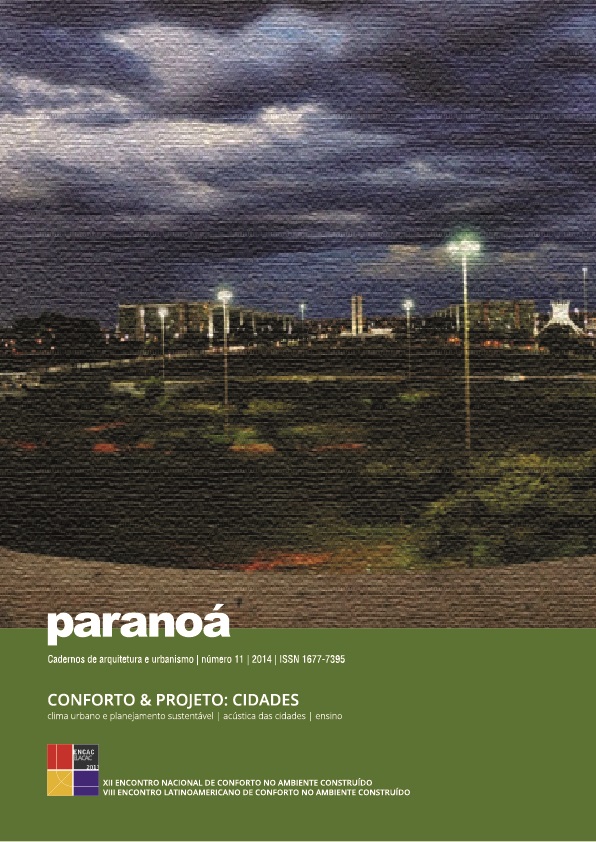Inclusão digital no ensino de iluminação natural
DOI:
https://doi.org/10.18830/issn.1679-0944.n11.2014.12090Keywords:
Learning, Visual comfort, Computational modellingAbstract
The teaching/learning activities of the daylighting built environment require from the Architecture and Urbanism undergraduate student the ability to abstract the effects of daylight distributed in three-dimensional space that is being designed. Several tools and techniques can be used to facilitate the understanding of the involved phenomena, among which the computational simulation. This paper reports the digital inclusion of the daylighting teaching in the Architecture and Urbanism undergraduate course at the School of Architecture, Arts and Social Communication of Bauru (FAAC) of UNESP ”“ Sao Paulo State University, that began in 2010. The inclusion process involved free software use, specifically the programs DIALux and SketchUp+Radiance, both with graphical output for the illuminatedscenes visualization and for result analysis. The graphic model is converted from SketchUp to Radiance by a plugin and a user-friendly interface for Windows was developed to simulate the lighting. The process of digital inclusion is consolidated, with wide acceptance by students, for which computational simulation facilitates understanding of relation between daylight and built environment and helps the design process of elements for daylighting control.
Downloads
Downloads
Published
How to Cite
Issue
Section
License
Autores que publicam nesta revista concordam com os seguintes termos:
- Autores mantém os direitos autorais e concedem à revista o direito de primeira publicação, com o trabalho simultaneamente licenciado sob a Licença Creative Commons Attribution que permite o compartilhamento do trabalho com reconhecimento da autoria e publicação inicial nesta revista. http://creativecommons.org/licenses/by/4.0
- Autores têm autorização para assumir contratos adicionais separadamente, para distribuição não-exclusiva da versão do trabalho publicada nesta revista (ex.: publicar em repositório institucional ou como capítulo de livro), com reconhecimento de autoria e publicação inicial nesta revista.
- Autores têm permissão e são estimulados a publicar e distribuir seu trabalho online (ex.: em repositórios institucionais ou na sua página pessoal) a qualquer ponto antes ou durante o processo editorial, já que isso pode gerar alterações produtivas, bem como aumentar o impacto e a citação do trabalho publicado (Veja O Efeito do Acesso Livre).















